Compounding interest & Population growth.
1/39
Earn XP
Description and Tags
Compound interest, continues growth, Exponential Growth, and Expontential Decay all in one.
Name | Mastery | Learn | Test | Matching | Spaced |
|---|
No study sessions yet.
40 Terms
What is the compounding interest formula?
A = P(1 + r/n)nt
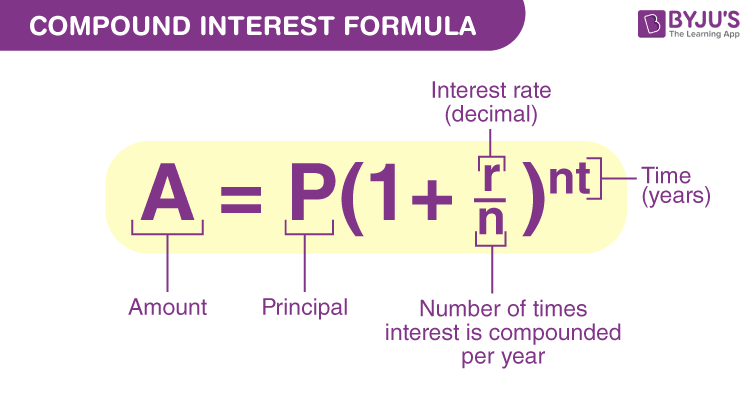
What does the A in the compound interest formula (A = P(1 + r/n)nt) represent?
The future value/amount you will have
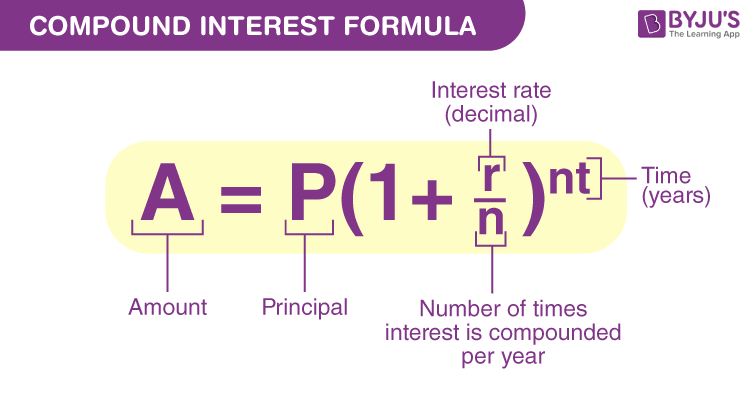
What does the P in the compound interest formula (A = P(1 + r/n)nt) represent?
The amount you started with (The principle)
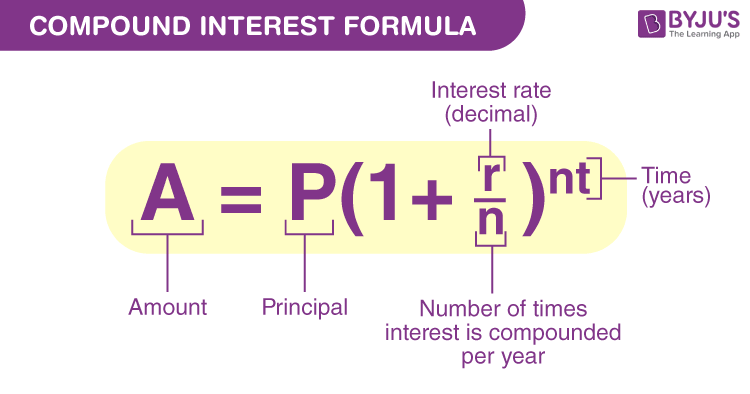
What does the r in the compound interest formula (A = P(1 + r/n)nt) represent?
The interest rate. Note: it always comes as a percentage, so you have to divide by 100 first.

What does the n in the compound interest formula (A = P(1 + r/n)nt) represent?
Number of times it is compounded per year. If its compounded monthly, there are 12 months in a year, so n = 12.
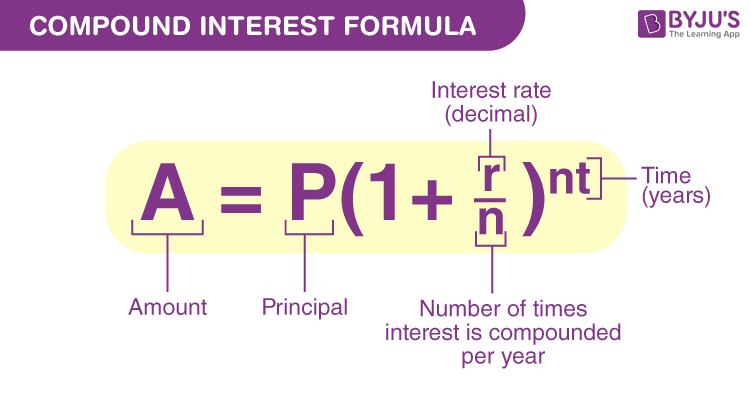
What does the t in the compound interest formula (A = P(1 + r/n)nt) represent?
The time in years. So for how many years its being compounded for.
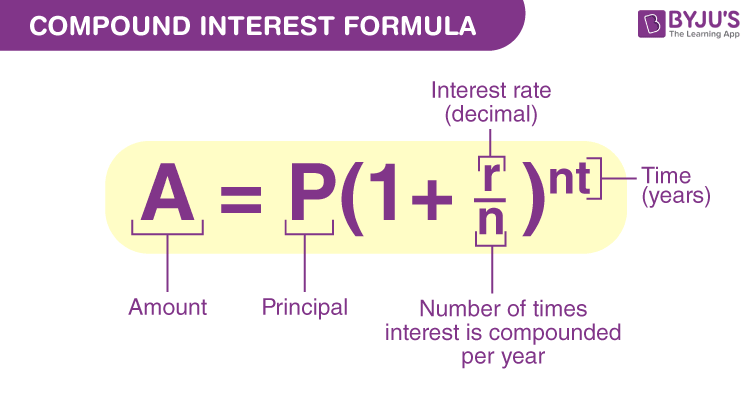
If something is compounded Daily what is n equal to?
n = 365, there are 365 days in a year
If something is compounded monthly what is n equal to?
n = 12, There are 12 months in a year
If something is compounded Quarterly what is n equal to?
n = 4, quarter= 1/4.
Also a single quater is 3 months. 12/4 (four quarters) = 3.
If something is compounded Semiannually what is n equal to?
n = 2, 12/6 = 2.
If something is compounded anually what is n equal to?
1, there is 1 year in a year.
Remember: always ____ r (interest rate) by ___, before putting it into the compound interest equation.
divide, 100
Alyssa invested $6,000 in an account paying an interest rate of 3.9% compounded monthly. Assuming no deposits or withdrawals are made, how much money, to the nearest dollar, would be in the account after 18 years?
A = 12093
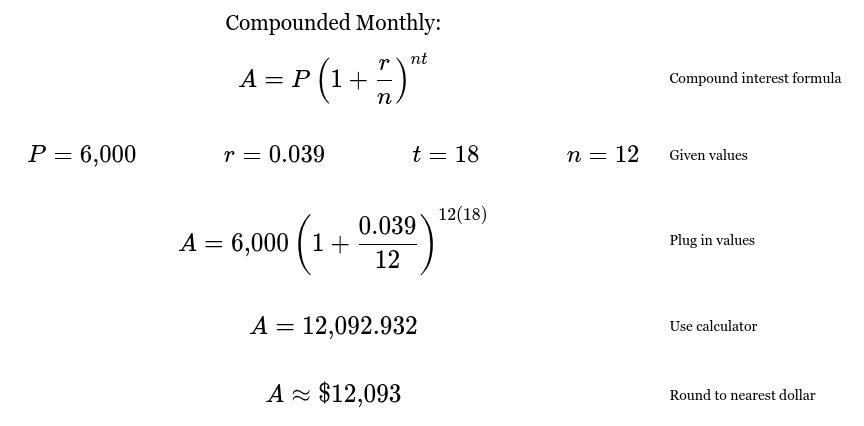
What is the Continuously Compounded Interest formula?
A = Pert

What does the A in A = Pert formula represent?
The amount/ future value

What does the P in A = Pert formula represent?
The initial value (or principle)

What does the r in A = Pert formula represent?
rate of interest (remember to divide by 100)

What does the t in A = Pert formula represent?
The time in years (how long its being compounded in years)
Luis invested $62,000 in an account paying an interest rate of 3% compounded continuously. Assuming no deposits or withdrawals are made, how much money, to the nearest dollar, would be in the account after 16 years?
$100197
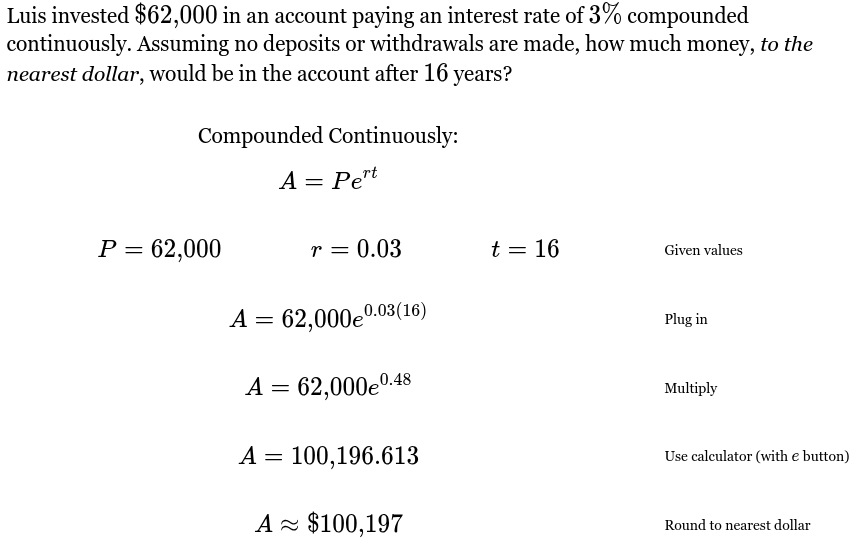
Omar invested $84,000 in an account paying an interest rate of 6.3% compounded continuously. Assuming no deposits or withdrawals are made, how much money, to the nearest ten dollars, would be in the account after 10 years?
157720
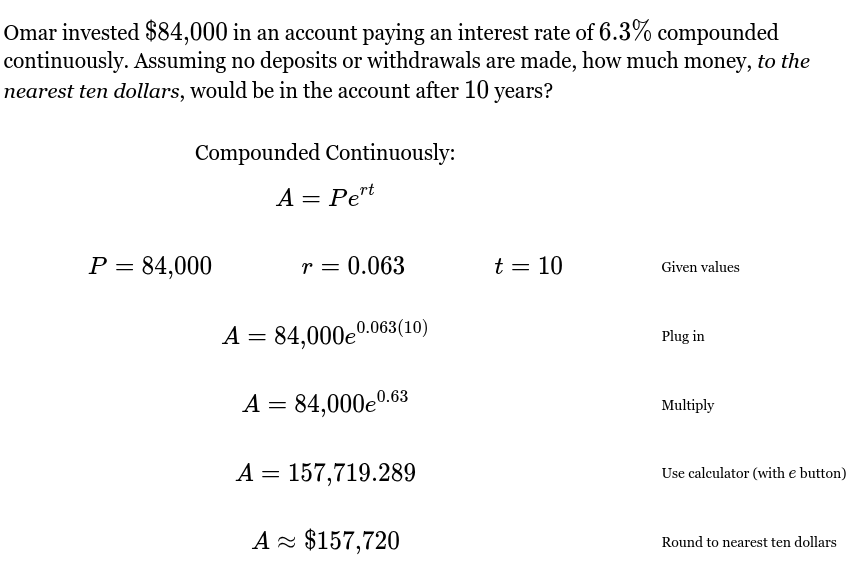
Harper invested $72,000 in an account paying an interest rate of 2% compounded monthly. Assuming no deposits or withdrawals are made, how long would it take, to the nearest tenth of a year, for the value of the account to reach $82,600?
t ≈ 6.9

Josiah invested $96,000 in an account paying an interest rate of 3.5% compounded continuously. Assuming no deposits or withdrawals are made, how long would it take, to the nearest year, for the value of the account to reach $153,400?
t ≈ 13
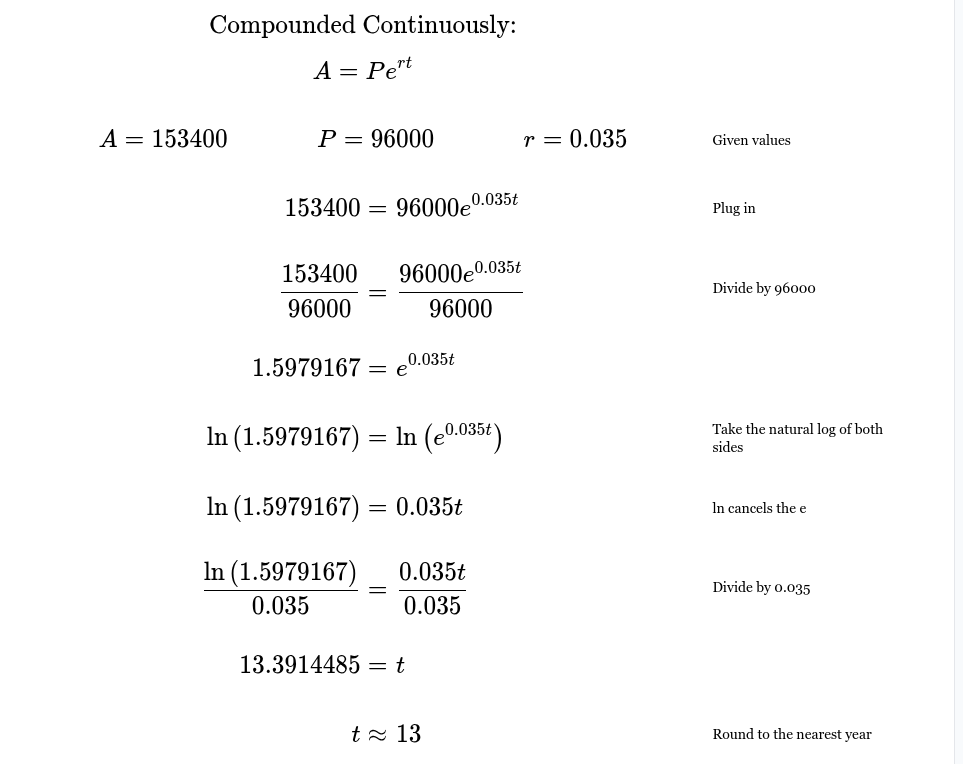
What does “≈” mean?
Approximately/roughly equal to
Sarah is going to invest in an account paying an interest rate of 6.8% compounded quarterly. How much would Sarah need to invest, to the nearest dollar, for the value of the account to reach $6,500 in 20 years?
P ≈ 1687

Fwam is going to invest in an account paying an interest rate of 5.9% compounded daily. How much would Fwam need to invest, to the nearest hundred dollars, for the value of the account to reach $91,000 in 12 years?
P ≈ 44800
Note: not hundreth but hundred
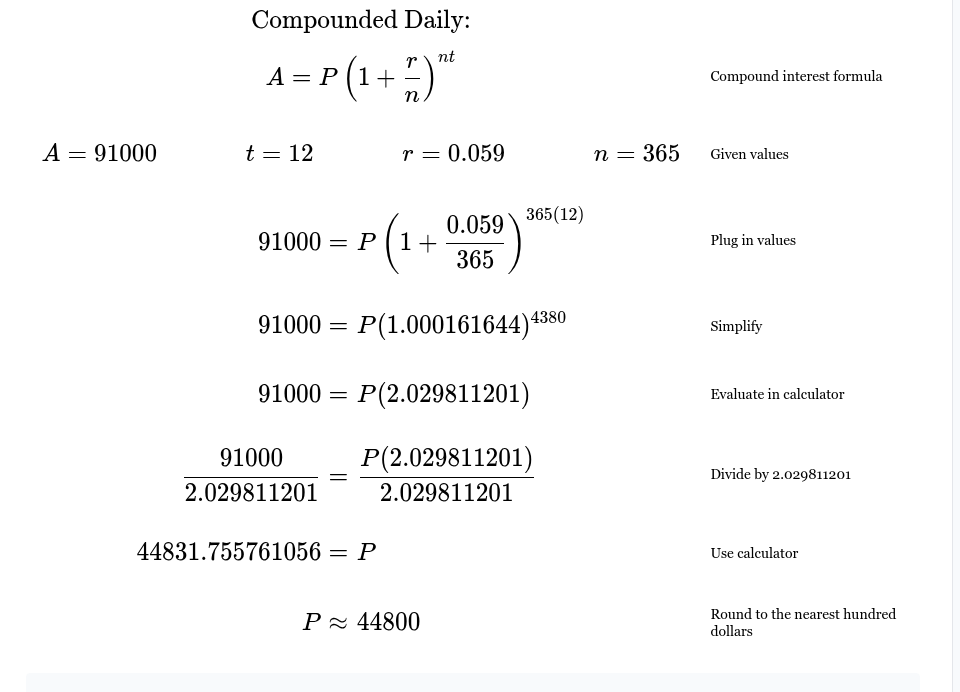
Naomi is going to invest $78,000 and leave it in an account for 7 years. Assuming the interest is compounded daily, what interest rate, to the nearest hundredth of a percent, would be required in order for Naomi to end up with $91,000?
r ≈ 2.20%
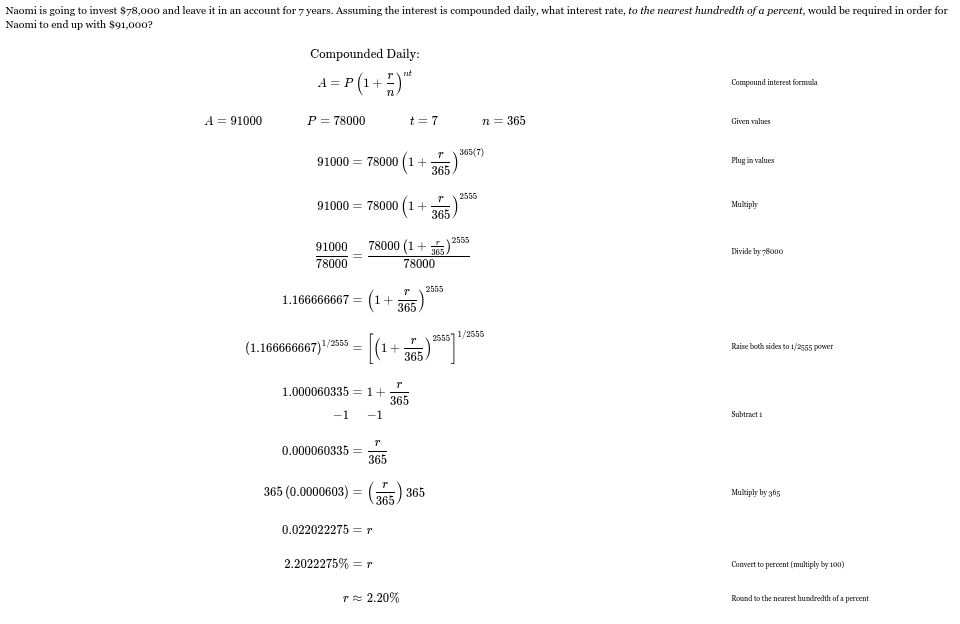
What is the formula for exponential growth?
y = a(1 + r)t
What is the formula for exponential decay?
y = a(1 - r)t
What does the y stand for in the exponential growth/decay formula?
y = a(1 ± r)t
The final amount
What does the a stand for in the exponential growth/decay formula?
y = a(1 ± r)t
The initial amount
What does the r stand for in the exponential growth/decay formula?
y = a(1 ± r)t
The rate of increase or decrease
What does the t stand for in the exponential growth/decay formula?
y = a(1 ± r)t
The time passed
In 2005, there were 1000 rabbits on an island. The population grows 8% every year. At this rate how many, how many rabbits will be on the island by 2020?
3172 rabbits will be on the island in 2020.
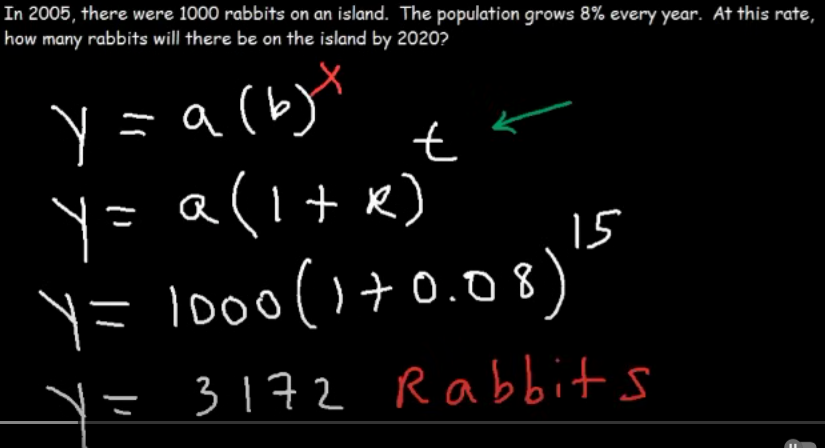
The value of a new car in 2015 was $40,000. It depreciates 7% each year. How much will the car be worth in 2024?
$20,816.44
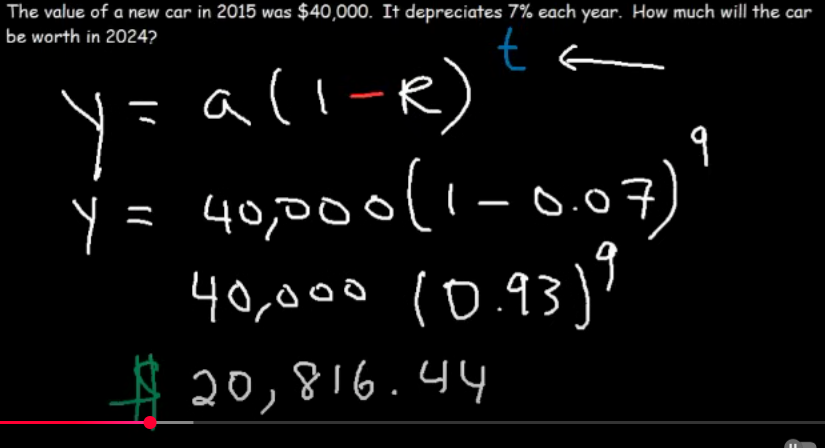
John bought a new home in 2002. The value of the home increases by 4% each year. If the price of the house 225,000 in 2015, how much did he pay for it in 2002? Round to the nearest cent.
$135,129.17

What is the regular growth formula?
y = a(b)x a is the initial amount and b is what your multiplying it by. t is how many times your multiplying.
A sample contains 1000 counts of bacteria. The bacteria doubles every 20 minutes. At this rate how many counts of bacteria will there be in 3 hours?
512,000
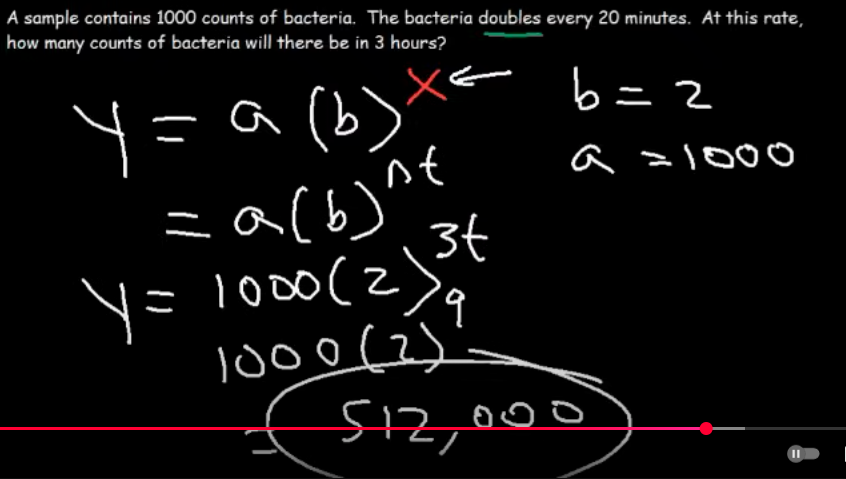
If you are trying to find the time in a regular growth equation, what equation would you use?
y = a(b)nt
A sample contains 100 counts of bacteria. The bacteria triples every 15 minutes. How much bacteria will there be in an hour?
8100

Answer: Skip
Skip